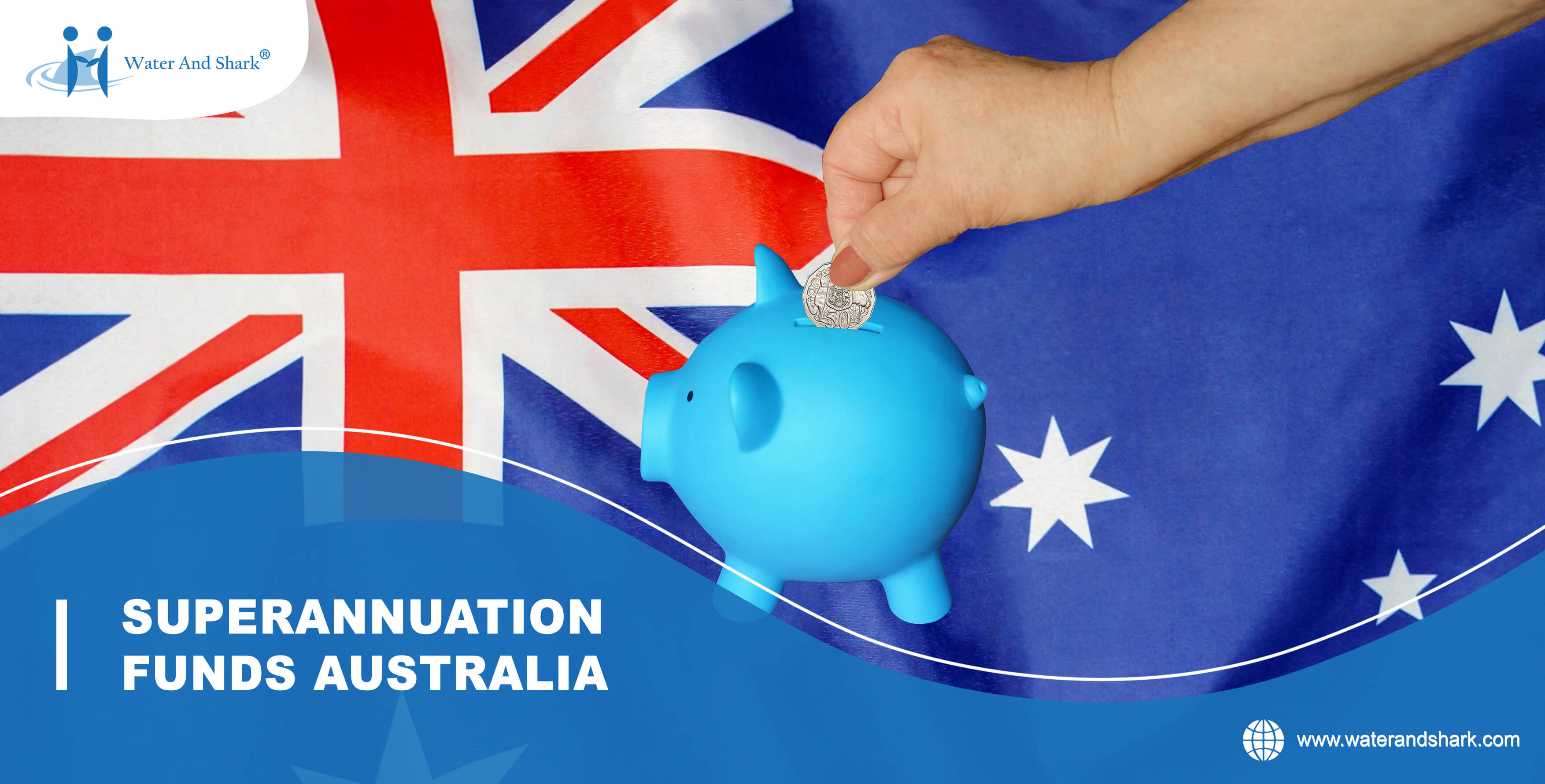Self-Managed Superannuation Funds (SMSF) in Australia
November 03, 2023 waterandshark
A Self-Managed Super Fund (SMSF) is a type of retirement savings vehicle in Australia that allows individuals to have more control over their superannuation investments. Superannuation is the Australian equivalent of a retirement savings plan, similar to a 401(k) in the United States. SMSFs are established and managed by their members, who act as trustees and make investment decisions on behalf of the fund. These funds offer a wide range of investment options, including assets like shares, property, cash, and more. SMSFs are subject to strict regulations and are monitored by the Australian Taxation Office (ATO) to ensure compliance with superannuation laws. They provide potential tax benefits, require careful record-keeping, and can be cost-effective for those with substantial retirement savings. SMSFs are primarily designed to provide retirement benefits to their members, and they must operate in accordance with the sole purpose of funding retirement.
Key features and characteristics of SMSFs include:
- Control and Flexibility: SMSF members have more control over their investment choices compared to traditional superannuation funds. They can decide where to invest their money, including in assets like shares, property, cash, and other investments.
- Limited Membership: SMSFs can have up to four members, all of whom must be trustees or directors of a corporate trustee. This means that, in a family context, a husband and wife can both be members and trustees of the same SMSF.
- Investment Options: SMSFs offer a wide range of investment options, including residential and commercial property, shares, managed funds, cash, and more. However, there are regulations and restrictions to ensure investments are made in the best interests of the members.
- Compliance and Regulation: SMSFs are regulated by the Australian Taxation Office (ATO) and must adhere to strict rules and regulations. Trustees are responsible for ensuring the fund complies with these requirements, including making investments primarily for retirement benefits.
- Tax Benefits: SMSFs enjoy certain tax advantages, such as a concessional tax rate on earnings (usually 15%) and potential tax savings in retirement.
- Responsibilities: Trustees of SMSFs have significant responsibilities, including maintaining detailed records, preparing annual financial statements, and ensuring compliance with superannuation laws. They may also need to engage professionals like accountants and auditors for assistance.
- Costs: Running an SMSF can be cost-effective for individuals with substantial superannuation savings, but there are expenses involved, including setup costs, ongoing administration, and fees for services like auditing and tax advice.
- Retirement Benefits: The primary purpose of an SMSF is to provide retirement benefits to its members. Typically, members can access their superannuation savings upon meeting certain conditions, such as reaching a specific age (usually between 55 and 60, depending on birthdate) or retiring.
It's crucial to understand that SMSFs are not suitable for everyone. They require a good grasp of superannuation laws, investment knowledge, and the willingness to shoulder the responsibilities of being a trustee. Moreover, SMSFs are typically more cost-effective for individuals with larger superannuation balances, as fixed costs associated with running an SMSF can make them less economical for smaller savings.
Who can set up an SMSF?
In Australia, Self-Managed Superannuation Funds (SMSFs) can be set up by individuals or a group of up to four individuals who meet certain eligibility criteria. SMSFs are primarily designed for Australian residents and citizens, with strict residency requirements in place. These requirements typically mandate that at least one member of the SMSF must be an Australian resident or citizen.
Here's who can set up an SMSF:- Individuals: Any individual who is at least 18 years old and is an Australian resident or citizen can establish an SMSF. The individual can be employed, self-employed, or not currently working.
- Group Members: An SMSF can have a maximum of six members. These members can be family members, friends, or business associates. All members must be trustees of the fund or directors of a corporate trustee.
- Corporate Trustees: Instead of individual trustees, an SMSF can have a corporate trustee, in which case each member becomes a director of the corporate trustee. The company must be registered with the Australian Securities and Investments Commission (ASIC).
- Trustee Eligibility: Trustees or directors of the corporate trustee must also meet certain eligibility criteria. They must not be disqualified by the Australian Prudential Regulation Authority (APRA) and should not have been declared bankrupt or convicted of certain offenses.
It's essential to understand that SMSFs come with significant responsibilities, including investment management, record-keeping, and compliance with superannuation laws and regulations. Proper planning, understanding of the rules, and often professional assistance are necessary to establish and manage an SMSF effectively. Additionally, the fund's primary purpose must be to provide retirement benefits to its members, and it should comply with the sole purpose test.
SMSF Structure to choose from:
The structure of your SMSF can change your fund’s legal requirements. You need to decide whether to have:
- A single member fund or a multiple member fund
- Individual trustees or a corporate trustee.
| Requirements of Each Structure | ||
|---|---|---|
| Individual Trustee | Corporate Trustee | |
| Single Member Fund Structure |
|
|
| Multiple Member Fund Structure |
|
|
To be a complying super fund and receive tax concessions, your tanSMSF needs to be always an Australian super fund during the financial year. An SMSF is an Australian super fund if it meets all three of these residency conditions:
- The fund was established in Australia, or at least one of its assets is in Australia.
We consider the fund was ‘established in Australia’ if the initial contribution to start the fund was paid and accepted in Australia.
- The central management and control of the fund is ordinarily in Australia.
- This means the SMSF’s strategic decisions are regularly made, and high-level duties and activities are performed, in Australia. It includes
-
-
- Formulating the investment strategy of the fund. -
- Reviewing the performance of the fund’s investments. -
- Determining how assets are to be used for member benefits.
- In general, your fund will still meet this requirement even if its central management and control is temporarily outside Australia. If central management and control of the fund is permanently outside Australia for any period, it will not meet this requirement.
- This means the SMSF’s strategic decisions are regularly made, and high-level duties and activities are performed, in Australia. It includes
- The fund either has no active members or it has active members who are Australian residents and who hold at least 50% of either:
- The total market value of the fund’s assets attributable to super interests.
- The sum of the amounts that would be payable to active members if they decided to leave the fund.
Registrations and Compliance Requirements
To ensure your Self-Managed Super Fund (SMSF) can benefit from tax concessions and operate effectively, you must complete the registration process within 60 days of legally establishing your fund. This involves obtaining an Australian Business Number (ABN) and a Tax File Number (TFN) for your SMSF. Failure to register within the specified timeframe requires providing written reasons for the delay, and your application may be denied. Registering for an ABN and TFN is critical because without them:
- Your fund will not be recognized as an SMSF.
- Your fund won't be eligible for valuable tax concessions.
- Employers won't be able to claim deductions for contributions they make to your fund.
GST Registration:
In general, most SMSFs do not require GST registration since their primary transactions fall under the category of input-taxed sales, which are not included in GST turnover calculations.
However, it's important to note that SMSFs with an annual GST turnover exceeding $75,000 are obligated to register for GST. It's crucial to understand that when calculating annual GST turnover, certain types of income are excluded, such as contributions, interest, dividends, and residential rent, as well as income generated outside of Australia.
How can we help?
Our team at Water and Shark specializes in assisting individuals in setting up their SMSF fund and navigating the regulatory requirements. With a deep understanding of Australian legal intricacies, we offer guidance and support for Australian citizens and residents looking to establish their SMSF. Our experts can help with the registration process and ensure compliance with the relevant authorities, making the process smoother for those interested in managing their own superannuation fund.





Comment